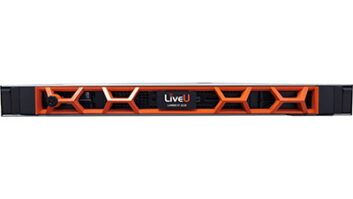
Beamr Video is a new filter that can halve the data needed to deliver video at a given quality, which could make it a lot easier to deliver 4K now using H.264 without waiting for receivers that decode HEVC (H.265). And once HEVC is widely available, it will halve its data rate too.
It is “a perceptual quality filter that is highly correlated with human vision,” so it can “eliminate all the redundancies in video that are beyond human vision,” explained Beamr president Eli Lubitch (pictured).
“This quality filter is attached to standard encoders in such a way that we guide the coder to, frame by frame, reduce the bit rate to the lowest possible rate.” At IBC it showed 6Mbps and 3Mbps versions of a 1080p movie side by side with no noticeable difference between them.
“We take out all the differences between the human spectrum and the CMOS sensor spectrum,” he added.
There are two major workflow options with the system.
The first is an optimisation workflow. “You have pre-encoded movies or a TV library and can then transcode it with identical quality and significant file savings. This brings significant network savings and also enhances the user experience, as they will get less stuttered delivery on mobiles or broadband, and also save on data if they are on a mobile.”
For workflow two, the aim is not to save bandwidth, but to deliver better quality for the same target bit rate.
“It will preserve all the settings and profiles, so for the clients it is transparent. You don’t need any special software in the receiving card,” he added. It produces fully compliant H.264 (MPEG-4 AVC) video streams and is device agnostic, making high quality video accessible from any media player, browser or consumer devices such as smartphones or tablets, without installing additional software.
“Hopefully it is a breakthrough that will enable 4K and HD to mobile applications,” he said.
“We’ve tested this against H.265 (HEVC) and we give the same benefits to the H.265 stream as we do to H.264. So, if someone has gained 50% efficiency by going to H.265, they could gain another 50% by using Beamr. We are incremental,” he claimed.
“This will allow you do 4K with standard H.264 with the same bandwidth as H.265, so it’s a way of delivering 4K now instead of waiting two years.”
HEVC “will take at least four to six years for mass-market penetration,” added Sharon Carmel, founder and CEO of Beamr. “Beamr Video is solving the bandwidth bottleneck now, offering the same reduction ratios for H.264 streams today as those promised by HEVC. More importantly, we can do so without forcing users to download any additional software or programs.”
Beamr Video is available now for an annual licence fee, and has been the subject of 44 different patents and patent applications.
By David Fox







